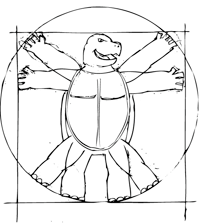Throughout the entire essay I kept looking for Lynn to define what writing in bodies means. Obviously "writing" wasn't directly referring only to the layout of words to create a communicative set of symbols. So I did what my teachers in high school would have asked, I checked the Webster's dictionary. I found one word in all three definitions - composition. If we are to take writing as a method of composition, then we cannot separate architecture and writing as two compositional tactics but must in fact consider them interchangeable ideas.
I'd like to better understand how Lynn determines that "writing is indeterminate, nonideal, heterogeneous, and undecidable... implicitly resisted by exact geometries". I believe writing is extremely ideal in the sense that it is made to compose, to communicate. Writing to me is implicitly rigid, if we were to take the alphabet of a language or the templates of a design, we are given what could be paralleled as exact geometries, although they may not necessarily be shapes, and from these ideals we are able to compose what we wish to communicate. I do not agree with the statements of architecture as static discourse; it is not the the statement that must be active and amorphous, but it is the reaction to the statement.
I also disagree with the statement that "architecture prefers to begin with ideal forms whereas materials science, food science, geology, astronomy, and the life sciences begin with the amorphous". As a pre-med student at the beginning of college, son of a physician, I do not think the approach to what we consider the exact sciences is much different to the architectural approach. A doctor idealizes his profession as an opportunity to cure disease, to increase the quality of life of his patients. His education begins with the study of the animal kingdom and general biologies working toward cellular and molecular specificity. An architect idealizes his materialized designs as built environments or communicated propositions as a contribution to the development of humanity. His education begins with the history of architecture and the techniques of communicative drawing. Both begin with broad general knowledge and both desire to professionally reach an ideal of contributing to human kind.
 Lynn tends to imply that new technologies and architectural developments allow us to find a secret dimension of knowledge when it comes to creativity as if we were incomplete beings before these discoveries. I argue that we are still the same beings as in Egyptian two-dimensional times, we merely have more sophisticated tools to stimulate our abstractive creativity. I do not see any superiority in a student's creation of a blob in a modeling program than in a single curvy line of Oscar Niemeyer's. I am in no position to determine whose shape has more meaning, but I would assume that Niemeyer would be much more capable of making that line a tactile experience, an actual functional edifice. The danger of the student's three-dimensional modeling is the natural inclination to make of the design process an additive process, by adding structure, bathrooms, whatnot, rather than a subtractive process, one that will translate that idealized shape more organically into architecture according to human capability instead of digital capability that is lost in translation during the actual human sensual perception.
Lynn tends to imply that new technologies and architectural developments allow us to find a secret dimension of knowledge when it comes to creativity as if we were incomplete beings before these discoveries. I argue that we are still the same beings as in Egyptian two-dimensional times, we merely have more sophisticated tools to stimulate our abstractive creativity. I do not see any superiority in a student's creation of a blob in a modeling program than in a single curvy line of Oscar Niemeyer's. I am in no position to determine whose shape has more meaning, but I would assume that Niemeyer would be much more capable of making that line a tactile experience, an actual functional edifice. The danger of the student's three-dimensional modeling is the natural inclination to make of the design process an additive process, by adding structure, bathrooms, whatnot, rather than a subtractive process, one that will translate that idealized shape more organically into architecture according to human capability instead of digital capability that is lost in translation during the actual human sensual perception. 
No comments:
Post a Comment